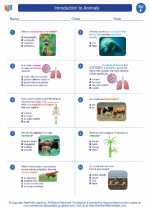Cellular Signaling
Cellular signaling is the process by which cells communicate with each other to coordinate their activities. This communication is essential for the proper functioning of multicellular organisms and is crucial for processes such as growth, development, immune response, and maintaining homeostasis.
Types of Cellular Signaling
There are several types of cellular signaling, including:
- Endocrine Signaling: Hormones are released into the bloodstream and carried to target cells in distant parts of the body.
- Paracrine Signaling: Cells release signaling molecules that affect nearby target cells.
- Autocrine Signaling: Cells respond to signaling molecules that they themselves produce.
- Direct Signaling: Cells communicate through direct physical contact, often through gap junctions or cell surface receptors.
Key Components of Cellular Signaling
Cellular signaling involves several key components, including:
- Signaling Molecules: These can be hormones, neurotransmitters, or other molecules that carry the signal from one cell to another.
- Receptors: Proteins located on the cell membrane or within the cell that bind to specific signaling molecules, initiating a cellular response.
- Intracellular Signaling Pathways: Once a signaling molecule binds to its receptor, a series of intracellular events are triggered, leading to a cellular response.
- Cellular Response: This is the specific outcome of the signaling process, which can include changes in gene expression, cell growth, metabolism, or other cellular activities.
Study Guide
Here are some key concepts and questions to consider when studying cellular signaling:
- What are the different types of cellular signaling, and how do they differ from each other?
- How do signaling molecules transmit information from one cell to another?
- What are the major types of cell surface receptors, and how do they initiate intracellular signaling pathways?
- What are some examples of cellular responses to signaling, and how do they contribute to the overall function of multicellular organisms?
- How do disruptions in cellular signaling contribute to diseases such as cancer, diabetes, and autoimmune disorders?
Understanding cellular signaling is crucial for grasping the complex mechanisms that govern the behavior of cells within the body. By studying the different types of signaling, the components involved, and the consequences of signaling disruptions, you can gain a comprehensive understanding of this fundamental biological process.
Good luck with your studies!
.◂Science Worksheets and Study Guides Sixth Grade. Introduction to Animals

 Activity Lesson
Activity Lesson
 Worksheet/Answer key
Worksheet/Answer key
 Worksheet/Answer key
Worksheet/Answer key
 Worksheet/Answer key
Worksheet/Answer key
 Vocabulary/Answer key
Vocabulary/Answer key
 Vocabulary/Answer key
Vocabulary/Answer key
 Vocabulary/Answer key
Vocabulary/Answer key
 Vocabulary/Answer key
Vocabulary/Answer key
